Central Library, Kansas City Public Library
Introduction
Author-Uploaded Audio
Library trustee Jonathan Kemper shares history and highlights of the Central Library
Text-to-speech Audio
Located in the historic former headquarters of First National Bank, the Central Library serves as the major resource library for the Kansas City Public Library system. Offering breathtaking galleries and reading rooms, and an ingenious parking garage that looks like a bookshelf, the Central Library is consistently included in lists of the most beautiful public libraries in the United States. The former bank vault is now home to the Stanley H. Durwood film collection, while the old bank's 35-foot ceilings add grandeur to the main reading room. Located on the fifth floor of the Central Library, the Missouri Valley Room is the premiere collection of rare books and one-of-a-kind historical records related to the history of Kansas City. Patrons may use the reading room to view archival and genealogical materials that do not circulate beyond the library.
Images
The reading room offers a quiet place to study local history and genealogy
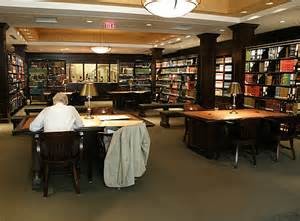
The main lobby of the library is one of the architectural gems of the city
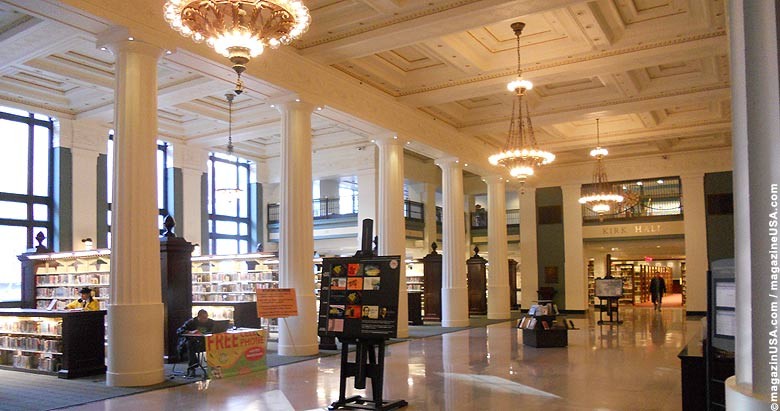
James Shorridge, Kansas City and How It Grew, 1822-2011-Click the link below for more information about this book
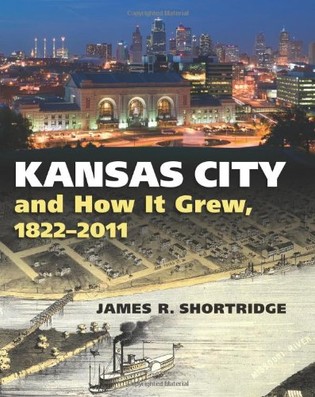
The south wall of the library's free parking garage is known as the Community Bookshelf. The wall was made by creating 25-foot book spines out of mylar signboard for each of the 22 books that were selected by community members in a 2004 contest.
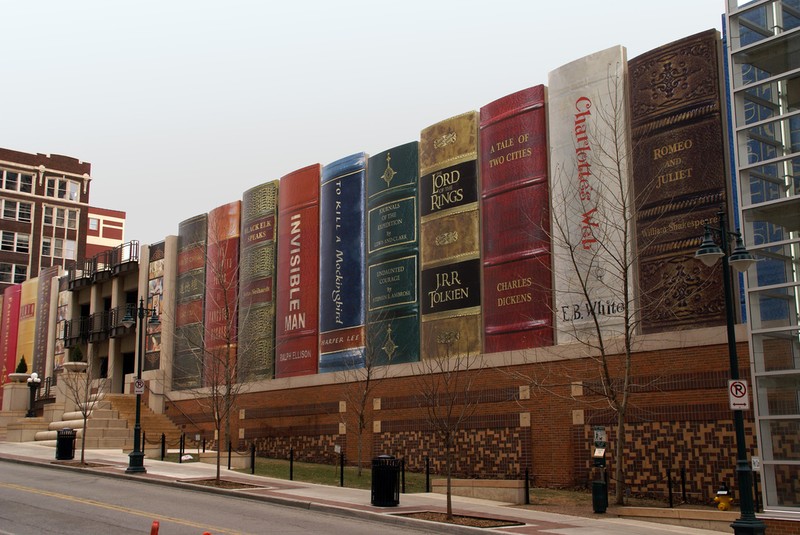
Kansas City's First National Bank is now the home of the Central Library
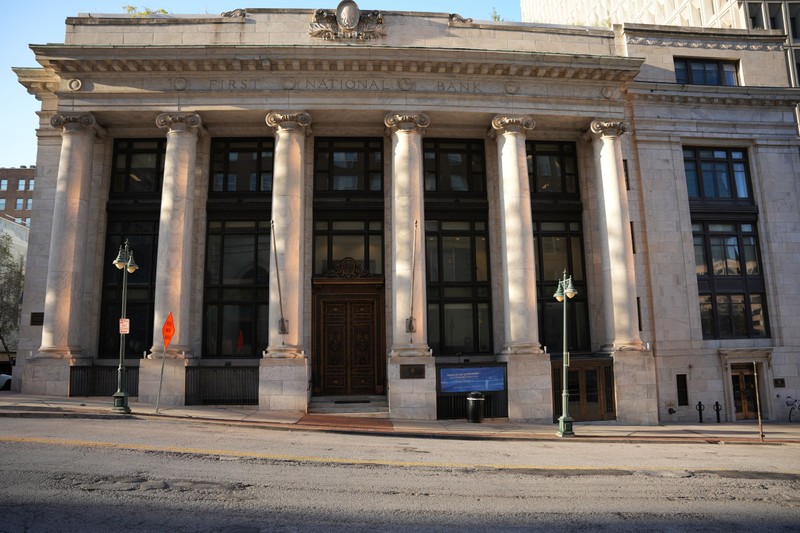
Backstory and Context
Text-to-speech Audio
The Kansas City Public Library dates back to 1873 when the public school system allowed citizens to browse its only encyclopedia and borrow books from a single shelf of circulating titles. The city's first dedicated library opened in 1889 at 8th and Oak Street. In 1960, the library operated branches through the city and opened a new central library that included the first special collections department and reading room.
By the 1980s, the library's collections and programming exceeded the capacity of its 1960 facility. In 1999, a commitment of $50 million in public funding and private donations allowed the Central Library to renovate and move into its present location, the former headquarters of the First National Bank in 2004. The move included a multi-year effort to renovate and restore the bank to its original grandeur while converting it into an ideal facility for library programming. The remodel also funded updates and modern conveniences such as custom designed tables that offer power outlets for portable computers. The library maintains a special collection of videos and a small theater in the former bank vault. It also maintains a small café that offers food and drink from local vendors.
The First National Bank building was constructed in three separate building campaigns (1904-1906, 1926, and 1964). The concrete and steel building features elements of the Neo-Classical and Chicago School. The original Wilder and Wight three-story building, dominated by colossal Ionic columns and highly embellished double-leaf bronze doors at its main façade, was modified in 1926 when a fourth floor was added, and a four-story annex to the east was constructed. The marble-sheathed, five-story expansion to the north occurred in 1964. Edward T. Wilder and Thomas Wight studied architecture under the firm of McKim, Mead and White (the architects of the neighboring New York Life Building). Subsequently, Wight became one of Kansas City's most influential architects. The building was later purchased by Boatman's Bank, prior to it becoming the Central Library in the Kansas City Public Library system.
Sources
Library History, KCPL Website, http://www.kclibrary.org/library-history accessed 12/20/14
Library District Walking Tour Guide, KCPL Website, kclibrary.org. https://www.kclibrary.org/sites/default/files/docs/walkingtour.pdf accessed 02/05/2020
Photo by David Trowbridge
